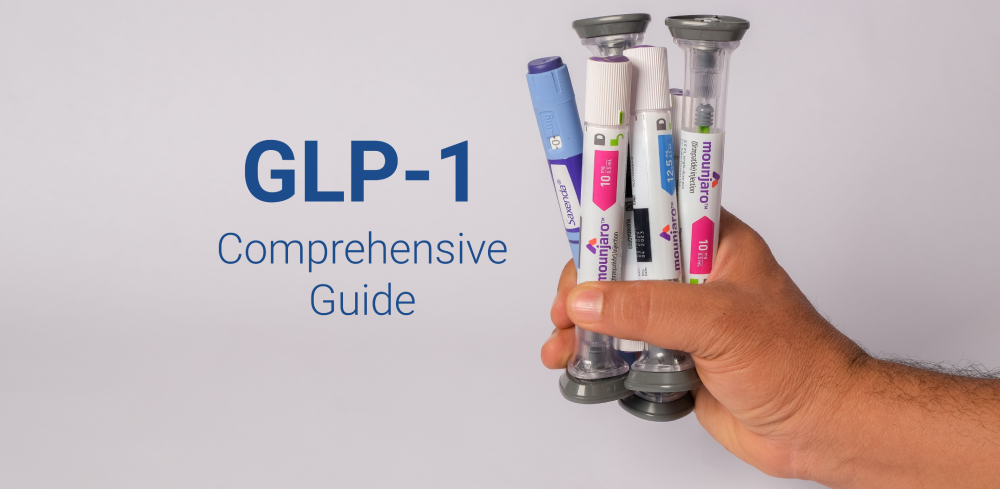GLP-1: Unveiling a New Era in Diabetes and Obesity Management
Understanding the Role of GLP-1 in Health
GLP-1, or glucagon-like peptide-1, emerges as a vital hormone in managing two of today’s most pressing health concerns: diabetes and obesity. Produced in the intestines, this hormone activates in response to food intake, facilitating crucial metabolic processes. It stimulates insulin secretion while simultaneously inhibiting glucagon release—key actions that effectively reduce blood sugar levels. Furthermore, GLP-1 plays an essential part in appetite regulation, offering a natural way to feel full and decrease food consumption. This dual action makes GLP-1 not just a significant player in glucose metabolism but also a promising ally against obesity.
In recent years, the advancement of GLP-1 receptor agonists has skyrocketed the hormone’s popularity. These medications are designed to mimic the natural actions of GLP-1, offering enhanced availability and effectivity within the body. Drugs like semaglutide and liraglutide showcase notable success in promoting weight loss and improving blood sugar control, hence their increasing prescription rates among healthcare providers. These treatments have not only shown substantial results in clinical settings but also ushered in an era of hope for individuals battling obesity and type 2 diabetes.
Rising Stars in GLP-1 Treatments
Several GLP-1 receptor agonists have risen to prominence, particularly when it comes to managing type 2 diabetes and assisting in weight management. Among these, Ozempic, Wegovy, and Trulicity are leading the charge with their distinct formulations and targeted benefits tailored to accommodate diverse patient needs.
Ozempic, featuring semaglutide, is tailored explicitly for adults managing type 2 diabetes, administered as a once-weekly injection. It has demonstrated considerable efficacy in stabilizing blood sugar levels while also promoting significant weight loss, an added benefit that bolsters its appeal among patients. Wegovy, another semaglutide formulation, is approved for long-term weight management and prompts meaningful weight loss, particularly in patients dealing with obesity-related health challenges.
Trulicity, noted for its active compound dulaglutide, offers the convenience of once-weekly injections combined with flexible dosage adjustments based on patient responses. It supports both glycemic control and weight loss, reinforcing its place in treatment protocols. When exploring GLP-1 therapies, patients are encouraged to consult healthcare professionals to tailor treatment plans based on individual health profiles and outcomes.
Market Dynamics and the Future of GLP-1 Therapies
The GLP-1 receptor agonists sector is experiencing remarkable growth, becoming one of the pharmaceutical industry’s frontrunners for diabetes and weight management solutions. Market data highlights a significant surge in sales and adoption rates, with consumer demand driving a significant portion of this expansion. The growing awareness and acknowledgment of obesity and diabetes as critical health issues have accelerated prescriptions and acceptance among both patients and healthcare providers.
Beyond their initial roles in diabetes management, ongoing research endeavors explore the capabilities of GLP-1 therapies for broader applications. Potential implications for cardiovascular diseases and other metabolic disorders are gaining traction within scientific communities, setting the stage for innovative treatment developments. As scientific understanding of GLP-1 and its receptors progresses, it paves the way for potential breakthroughs and repurposed therapies that could address a wider array of conditions.
In this evolving landscape, accessibility and affordability remain pivotal in ensuring these advancements benefit those who need them most. Dialogue among healthcare stakeholders, insurance providers, and policymakers will be critical in addressing barriers related to cost and availability, aiming to maximize the transformative potential of GLP-1 therapies in improving patient health outcomes across the globe.

